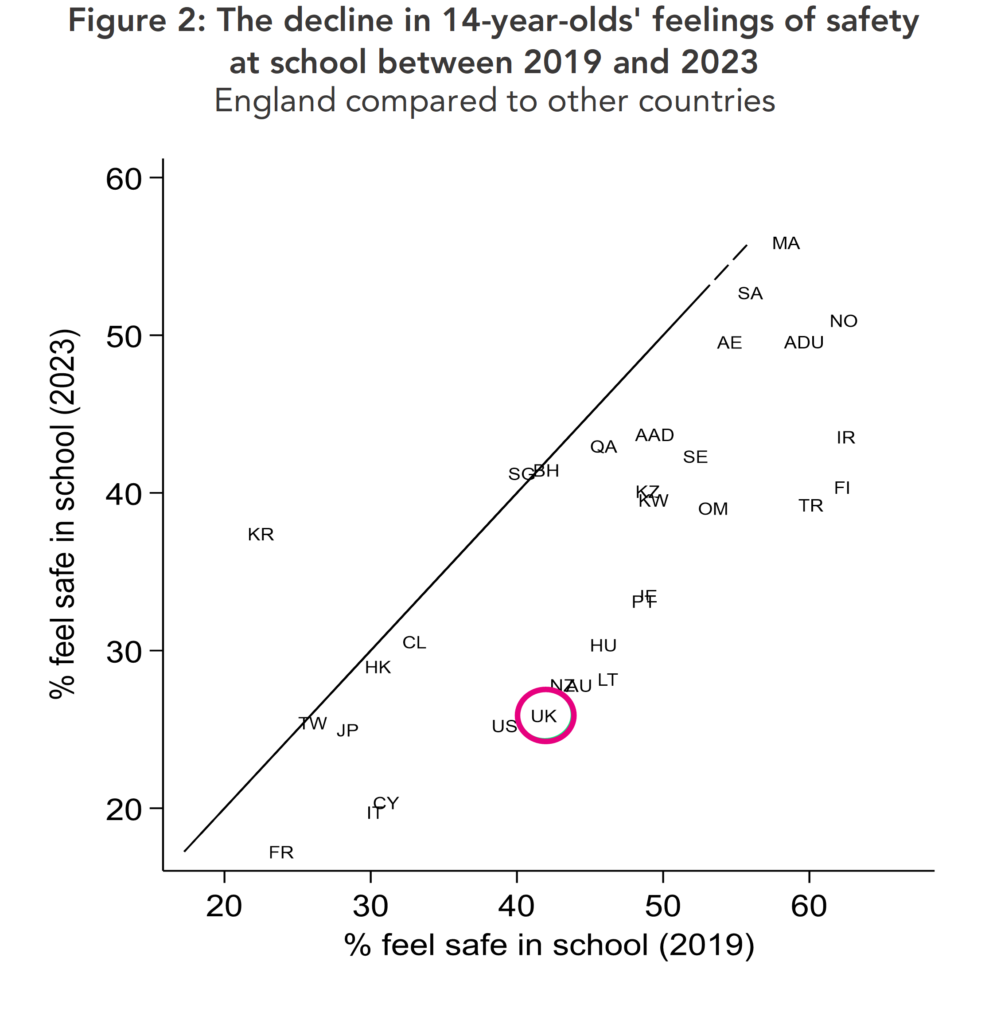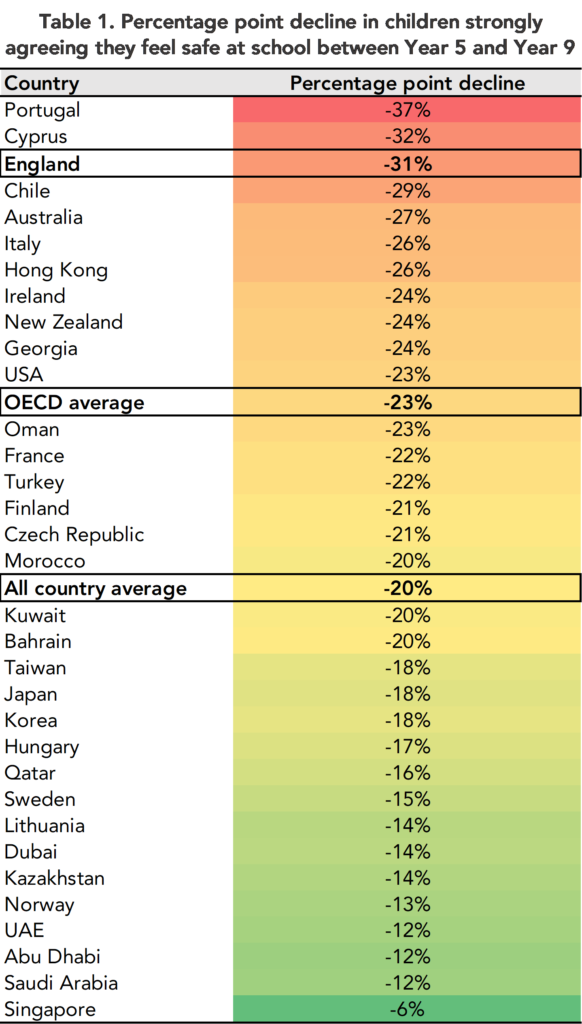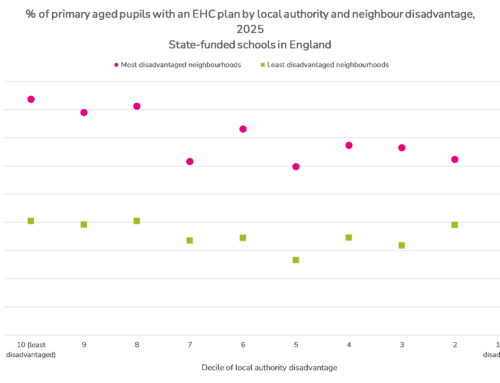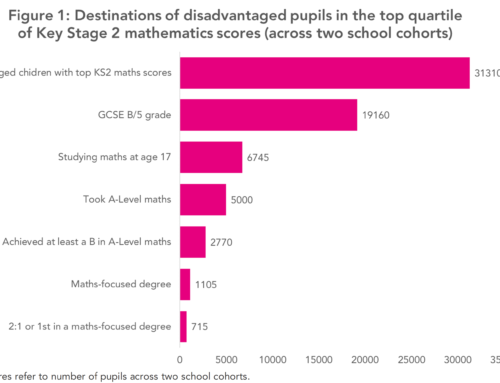All children have the right to education. They also have the right to feel safe at school.
Unfortunately, this is no longer the case in England – particularly amongst teenage girls.
My new academic working paper out today uses data from the TIMSS study to track the emotional engagement of young people before and after the pandemic. It also investigates changes in their engagement between Year 5 and Year 9.
The results are stark.
Figure 1 illustrates how the percentage of 14-year-olds (Year 9s) in England strongly agreeing that they feel safe at school changed between 2011 and 2023.

Before the pandemic – between 2011 and 2019 – around 40% of teenagers strongly agreed that they felt safe at school.
But after the pandemic – in 2023 – this has declined dramatically to only 26%.
One of the best things about international comparative data such as TIMSS is that we are able to put this decline in England into international context. These results are presented in Figure 2. The horizontal axis presents the percent of teenagers strongly agreeing they felt safe at school in 2019, while the analogous figures for 2023 are presented on the vertical axis. The diagonal 45-degree line is where these two values are equal.

Interestingly, most countries fall below the diagonal line. This indicates that – like in England – there has been a fall in teenagers feeling safe at school since the pandemic across countries. Yet the fall in England is somewhat more pronounced than in most other countries with data available.
Critically, in England, we find this fall in feelings of safety at school to be most pronounced amongst teenage girls. For instance, between 2019 and 2023 the percentage of 14-year-old girls strongly agreeing that they felt safe in school in England fell by 22 percentage points. This is much larger than the 13-percentage point decline observed in the average country, as well as the 10-percentage point decline observed for English boys.
Within our analysis, we also explore changes in children’s feelings of safety at school between primary (Year 5) and mid-secondary (Year 9) school. Table 1 illustrates the difference in the percent of pupils that strongly agree.
The results show how – in England – there is a 31-percentage point drop in pupils strongly agreeing that they feel safe at school between Year 5 and Year 9. This is amongst the biggest decline out of any country with data available. This includes the average across OECD countries (23 percentage point decline) and across all countries with data available (20 percentage point decline).

Once again, this seems to be a particular problem affecting English girls. For instance, amongst Year 5s, girls in England report feeling slightly safer at school than boys, with results very similar to the average across countries (girls being three percentage points more likely to feel safe at school than boys). But – by the time pupils reach Year 9 – boys in England are 10 percentage points more likely to feel very safe at school than girls (compared to a four-percentage point difference on average across countries).
Together, these results paint a stark picture. England now has a real problem with the number of young people who don’t feel safe at school. This has clearly worsened since the pandemic and is now a major challenge likely impacting the wellbeing and educational outcomes of teenage girls.
This is something that requires immediate attention. A minimum expectation most parents have is for their child to feel safe while they are in the school grounds. Unfortunately, for many, this is no longer the case.








This is a really important finding which I hope will be shared with policymakers.
I wonder whether you are able to disagregate the data by school type to see if there is a difference between girls attending mixed and single sex schools?
Thanks! We have not done that. But it is on my list to try and look at, at some point (if the sample size allows!)
Interesting analysis which clearly raises questions for us as a sector. Do we have any robust qualitative research on why girls in particular are feeling less safe in school? Strikes me this is the research we need if we are to implement effective change.
Not as part of this study. But I agree that this is an important area where some qual work to dig into the details are needed!
It would also be interesting to look at the same change from year 5 pupils in 2019 and year 5 pupils in 2023, and similarly for year 9 pupils. I wonder if the change from primary (a relatively sheltered environment) to secondary school is part of this decrease?
We do in the full paper! Appendix B presents the Year 5 change pre/post the pandemic: https://repec-cepeo.ucl.ac.uk/cepeow/cepeowp25-03.pdf
Are these feelings supported by an actual increase in reported danger? Does the study identify if the concern relates to physical or emotional safety?
Is there any differentiation between single six and mixed schools, between public and private schools?
The last few years have seen a massive (I cannot think of a better word) increase in focus on mental wellbeing. Has the school environment changed or has perception changed?
Unfortunately, the data doesn’t contain information to probe these issues. I agree its really important to note that these are self-reports. Whether the increase in actual danger is obviously an important related issue. My gut feeling is that “actual” danger has not changed, but pupils feel less safe nevertheless.
The link to your paper takes us to a list of PISA related publications. Not to the publication you are discussing
Thank you
Direct link now added – sorry about that.
“A minimum expectation most parents have is for their child to feel safe while they are in the school grounds. Unfortunately, for many, this is no longer the case.”
I think you are blurring the lines here between *feel* safe and *be* safe.
For example – DfE now advises schools to run lockdown drills (and many schools do), this has only really come into secondary schools in the last 5-10 years. Schools run these because they make children safer (cost vs benefit debateable). However there is some (by no means conclusive) evidence that it results in children *feeling* less safe, because it makes the possibility of e.g. mass shooting seem more likely.
I am not arguing that it is either right or wrong to run the drills, but to illustrate the point that there may be a significant divergence between feeling safer and being safer at school. The pros and cons of that should be discussed, and I think your piece helps raise that question.
It would be interesting to know if there are any indicators to suggest that girls (and boys) are indeed less safe than they were.
And whether there is anything in the survey (or related surveys) that points to teenage girls interpreting the question (the concept of safety) in a different way (e.g. maybe 5 years ago a teenager when asked this question would only consider their physical safety, whereas maybe now they might include impacts on their mental health).
It would also be interesting to know if they feel less safe outside of school as well and the change in feeling outside school is simply bleeding into school at school answers. If they feel generally less safe due to war in Ukraine, social media, financial insecurity etc. then this is not a “school issue”
Unfortunately, the data doesn’t contain information to probe these issues. I agree its really important to note that these are self-reports. Whether the increase in actual danger is obviously an important related issue. My gut feeling is that “actual” danger has not changed, but pupils feel less safe nevertheless.
Is this worsened at times of transition… yr 6 moving to high school.. starting in yr 7… starting yr 10 this is a transition year for some..
Not having an established friendship group on transition.. or lack of a new friendship group on transition.. having friends is a protecting factor.. so is feeling valued, feeling like you fit in and belong, feeling listened to , it is important for children struggling to fit in and children that have difficulties making friends, they need someone that they trust to ensure their voice is heard.